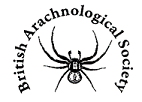Spiders are some of our most familiar and widespread invertebrates, but there are still big gaps in our knowledge of their distributions in Scotland.
Over 400 different types of spider occur in Scotland. Most need to be examined under a microscope to identify the species, but there are some that can be identified easily without any special skills or equipment.
We need your help to find out more about four easily identified spiders. Find out more about each spider below, including where to look for it and what features will help you to identify it. If you spot one of these spiders, try and get a photograph of it and then upload the details of what you saw, when (date) and where (the location) to iRecord. Photographs help us to confirm your identification.
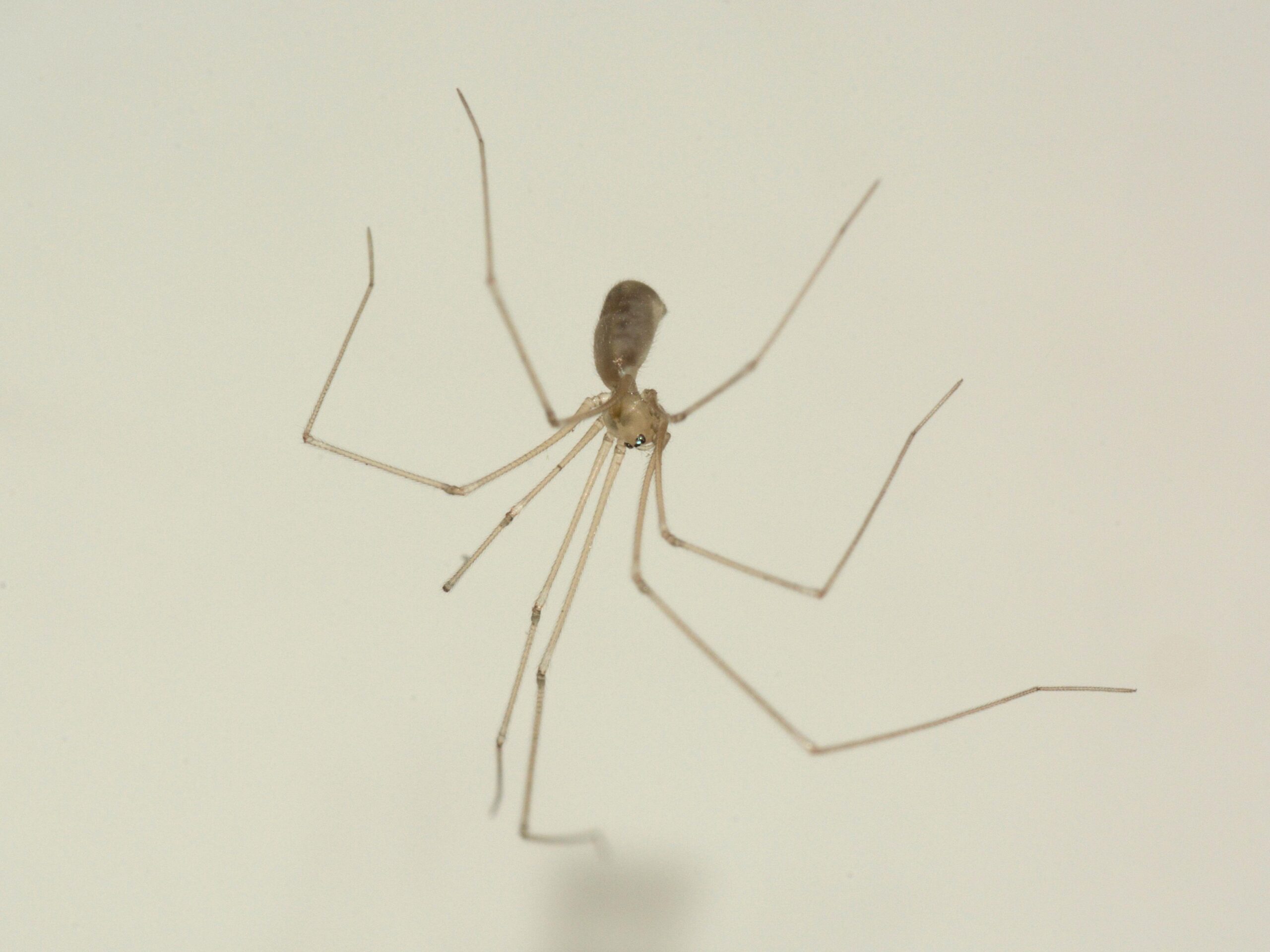
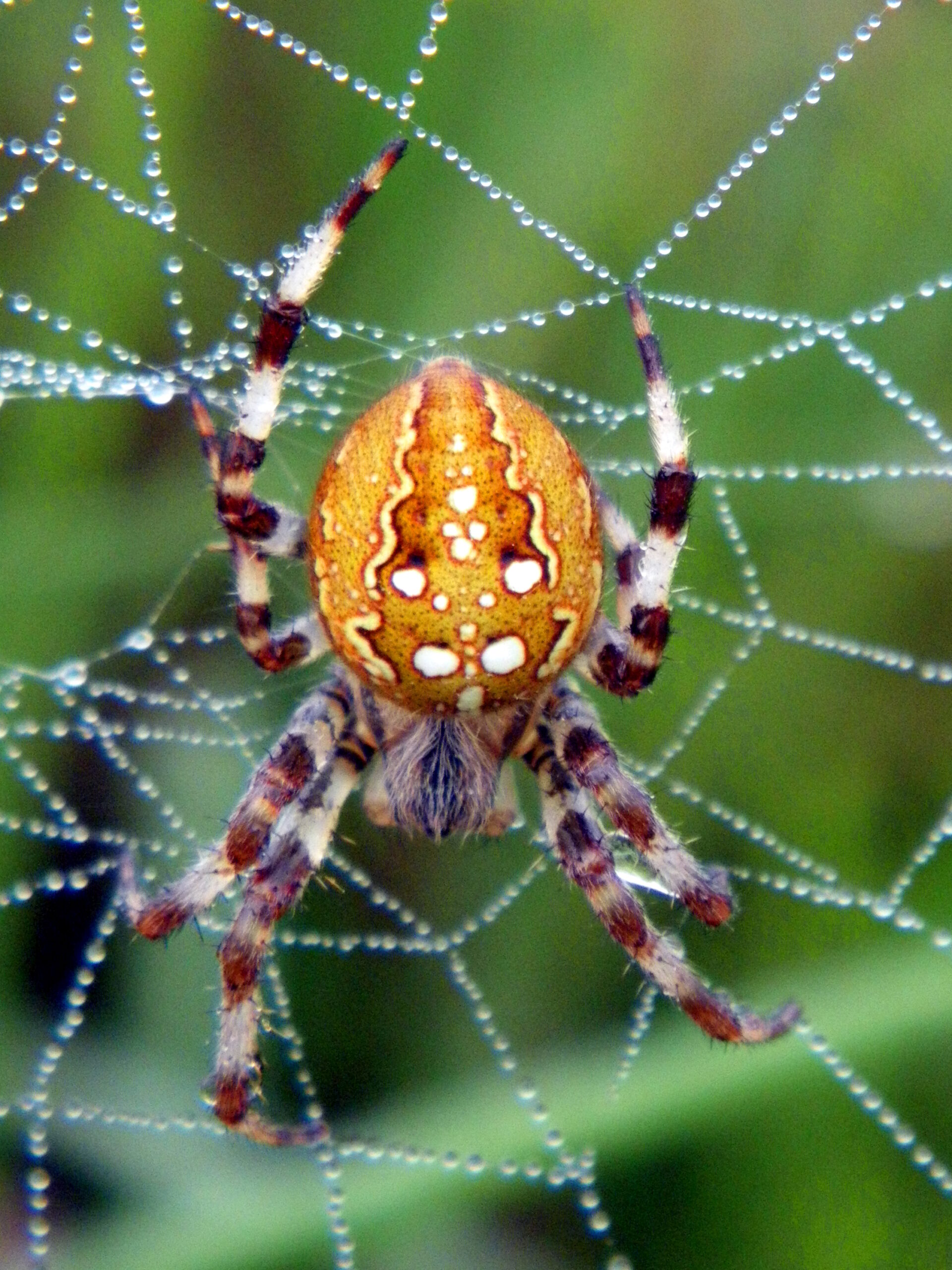
Daddy Long-Legs Spider
A large spider with a thin body and the two body sections very obvious, as well as long, delicate-looking legs.
Where can I see it?
Indoors in houses, outhouses and cellars where it is protected from low temperatures. It favours undisturbed corners where it can build its untidy web.
Confusion species
Craneflies may look similar but are insects with six long legs, three body sections and a pair of wings. Harvestmen also have very long legs but have a more rounded body, made up of just one section.
More information
This spider is widespread in the southern half of Britain but there are relatively few records from Scotland. However, observations suggest the spider is spreading northwards and it is likely that it is more widespread in Scotland than we think. They can be found in houses all year round and are not fussy eaters, preying on anything that becomes entangled in their webs, including other spiders. They will even eat much larger house spiders. They use their long legs to escape being bitten whilst throwing silk over their victim to immobilise it. More information can be found here.
Four-Spot Orb Weaver Spider
A large spider (females: 9-20mm, males: 6-8mm) with varying body colour but always with four white spots on the abdomen.
Where can I see it?
Found on vegetation that is strong and tall enough to support it. It lives in habitats like undisturbed grassland, heather and gorse but is not normally found in gardens. The web is usually stretched across a gap between plants and the spider can often be found hiding in a large tent-like retreat to one side.
Confusion species
Can be confused with the Garden Spider (Araneus diadematus) which looks similar but with markings forming more like a cross on its abdomen. The garden spider is more likely to be found in gardens and close to buildings but can also be found in the same habitat as Four-Spot Orb Weavers.
More information
It is the heaviest spider in the UK and reaches maturity in late summer/autumn, when females can appear extremely large as their abdomens distend with eggs. More information can be found here.
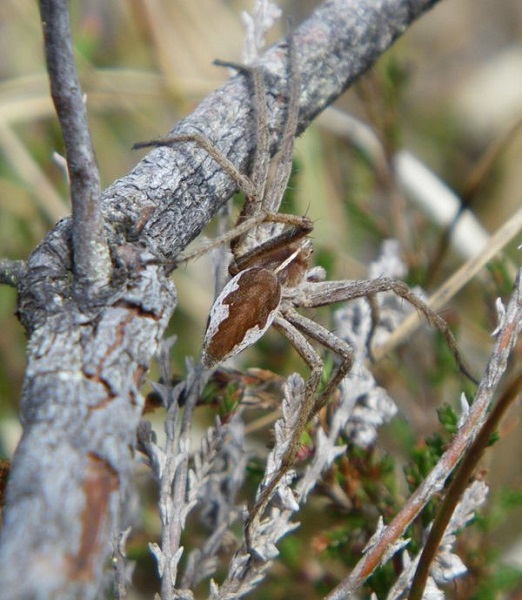
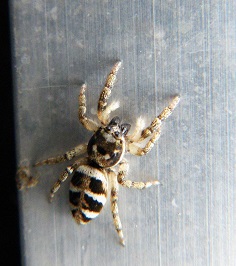
Nursery Web Spider
A large spider (adults: 10-15mm) shaped like a short cigar with quite long, robust legs. At rest, the front pairs are typically held outstretched at the front. Body colour varies but the front segment almost always has a darker central band with a thin white or yellow line down the middle.
Where can I see it?
Adults tend to occur in tall vegetation in habitats like rough grassland, woodland rides, heathland and marsh edges.
Confusion species
Species belonging to the group wolf spiders have an egg sac which they carry attached to their spinnerets at the end of their abdomen and are most often found running over the ground. Silk tents with a more open structure and containing spiderlings with distinctive round, yellow abdomens marked with a dark, backward pointing triangle, belong to orb-weaving spiders.
More information
The Nursery Web Spider is the most abundant in the south of the UK. There are scattered records throughout Scotland but very few from southern Scottish regions. In summer, the female carries her whitish egg sac under teh front of her body, held firmly in the mouthparts. Before the young spiders hatch, the mother constructs her nursery – a conspicuous, dense silk tent, built amongst strong vegetation. Oncer her young hatch, she is usually found on guard on the outside the tent while the cluster of spiderlings rest inside. More information can be found here.
Zebra Spider
A charismatic spider with dark brown and white stripes. Can be difficult to spot until they move in short jerky bursts. Males have pale ‘feathery’ pedipalps used for display to females and conspicuous dark jaws.
Where can I see it?
Most commonly encountered on sunny walls and fences but may be found indoors, usually near a window. They are sometimes found in more natural habitats, on rocks or occasionally tree trunks in open places.
Confusion species
Salticus cingulatus is another jumping spider, usually found on trunks and lower tree branches in or near woodland and heathland.
More information
Zebra Spiders don’t build webs to catch their prey – they actively hunt by creeping up and pouncing on it. They can swivel and focus the large front pair of eyes, providing excellent binocular vision to track moving prey. The other six eyes are fixed and detect movement from the sides and rear. More information can be found here.
What happens next?
Spider experts from the British Arachnological Society will check the records to confirm the identification. Your information will help us to understand the distribution of these spiders better and provide information to help monitor their spread or decline.
We will share the data with the Spider and Harvestman Recording Scheme and NBN Atlas Scotland.
This survey is part-funded by NatureScot.


